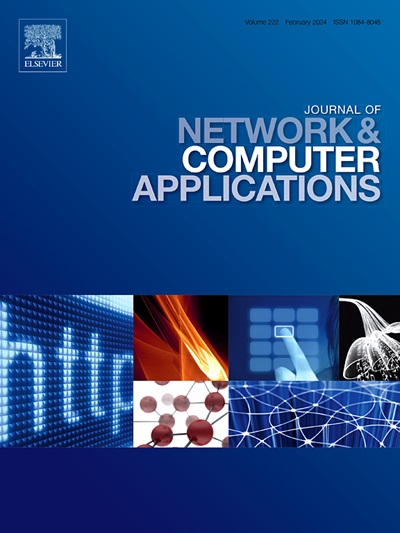ARS: Adaptive routing strategies using AT-GCN for traffic optimization in data center networks
IF 8
2区 计算机科学
Q1 COMPUTER SCIENCE, HARDWARE & ARCHITECTURE
引用次数: 0
Abstract
As internet services and Internet of Things (IoT) devices rapidly expand, Data Center Networks (DCN) have become essential for supporting online services, cloud computing, and big data analysis. These devices generate massive amounts of data continuously, leading to uneven and sudden network loads that traditional networks struggle to handle. Existing routing strategies often rely on fine-grained routing or current network states, which can result in misjudgments and fail to manage sudden traffic spikes or meet both low-latency and high-bandwidth requirements effectively. To tackle these challenges, we propose a new routing strategy that combines Software-Defined Networking (SDN) with an Attention-based Temporal Graph Convolutional Network (AT-GCN). By predicting future network states using AT-GCN and analyzing traffic characteristics with a Deep Neural Network (DNN), our method offered more precise traffic scheduling. Specifically, we used an improved butterfly optimization algorithm to route mouse flows through low-latency, stable paths, and employ Dijkstra’s algorithm to send elephant flows along paths with the highest predicted bandwidth. This approach effectively reduces latency and increases throughput. Simulation results demonstrate that our method significantly reduces average Flow Completion Time (FCT) by 18.72% to 62.94% compared to existing ECMP, LetFlow, DLBF, ILB and MABC schemes.
ARS:使用AT-GCN进行数据中心网络流量优化的自适应路由策略
随着互联网服务和物联网(IoT)设备的快速发展,数据中心网络(DCN)已成为支持在线服务、云计算和大数据分析的必要条件。这些设备不断产生大量数据,导致传统网络难以处理的不均匀和突然的网络负载。现有的路由策略通常依赖于细粒度路由或当前网络状态,这可能导致误判,无法管理突然的流量峰值,也无法有效地满足低延迟和高带宽需求。为了应对这些挑战,我们提出了一种新的路由策略,该策略将软件定义网络(SDN)与基于注意力的时态图卷积网络(AT-GCN)相结合。通过使用AT-GCN预测未来网络状态,并使用深度神经网络(DNN)分析流量特征,我们的方法提供了更精确的流量调度。具体来说,我们使用改进的蝴蝶优化算法将鼠标流通过低延迟、稳定的路径路由,并使用Dijkstra算法沿具有最高预测带宽的路径发送大象流。这种方法有效地减少了延迟并提高了吞吐量。仿真结果表明,与现有的ECMP、LetFlow、DLBF、ILB和MABC方案相比,我们的方法显著降低了平均流完成时间(FCT) 18.72%至62.94%。
本文章由计算机程序翻译,如有差异,请以英文原文为准。
求助全文
约1分钟内获得全文
求助全文
来源期刊

Journal of Network and Computer Applications
工程技术-计算机:跨学科应用
CiteScore
21.50
自引率
3.40%
发文量
142
审稿时长
37 days
期刊介绍:
The Journal of Network and Computer Applications welcomes research contributions, surveys, and notes in all areas relating to computer networks and applications thereof. Sample topics include new design techniques, interesting or novel applications, components or standards; computer networks with tools such as WWW; emerging standards for internet protocols; Wireless networks; Mobile Computing; emerging computing models such as cloud computing, grid computing; applications of networked systems for remote collaboration and telemedicine, etc. The journal is abstracted and indexed in Scopus, Engineering Index, Web of Science, Science Citation Index Expanded and INSPEC.
 求助内容:
求助内容: 应助结果提醒方式:
应助结果提醒方式:


